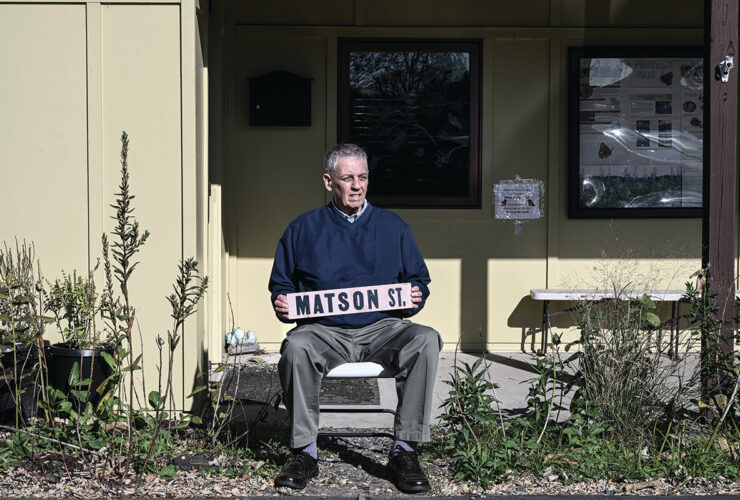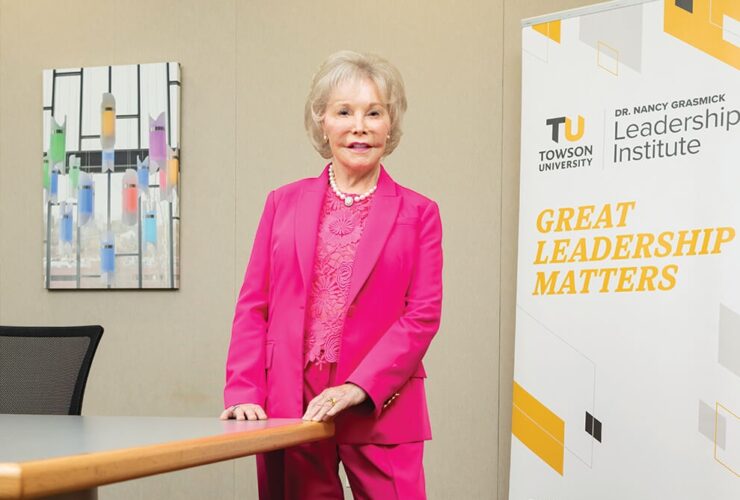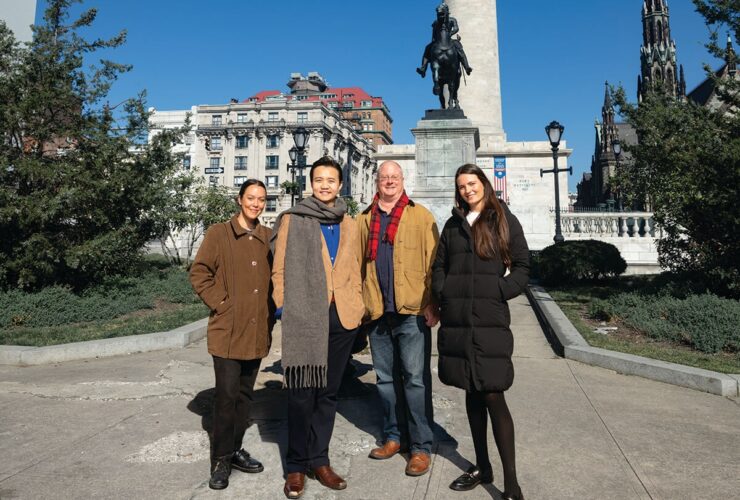
Two years ago, Missy Kirby went for a run and her whole world was turned upside down.

—Illustration by Tran Nguyen
On the morning of April 8, 2014, a yellow Post-it note was hanging over Missy Kirby’s desk, tucked in amongst the crayon drawings by her children. On it, she had impulsively scrawled a reminder: “Magic surrounds me.”
It seemed a fitting mantra for Missy, a founding partner at Shine Creative, the video production firm that had evolved out of Shine Collective, her trendsetting Hampden boutique. There was always something a little bit magical about Missy Kirby, an inveterate seeker who was finely attuned to all things spiritual and ethereal. She was the kind of woman who tried to turn all her friends on to hot yoga and insisted that a group of fortysomethings had to go— Guys, we’re really doing this!—to the Bonnaroo Music and Arts Festival. The kind of woman who kept a dreamcatcher in her office and always knew when Mercury was in retrograde.
Ever since her 40th birthday in 2012, Missy had seemed especially concerned with getting her spiritual house in order, says her sister Stephanie (Sarkis) Hickey.
“She never let a minute go by where she wasn’t thinking about how she could improve her life: spiritually, professionally, in every way,” explains Stephanie. “It’s almost like she was conscious of not wasting any time. She was always like, ‘Make every minute count.’”
It made perfect sense, then, that when Missy drove her 9-year-old daughter, Colette, to lacrosse practice at Towson High School on that otherwise unremarkable Tuesday evening, she was not going to just let a perfectly good hour and a half go to waste by sitting around doing nothing. Though she wasn’t much of a runner, Missy worked out regularly. So she decided to take an impromptu jog on the school track while her daughter’s team practiced a few hundred yards away. But while running, she inexplicably collapsed. A bystander called 911 and Missy was taken by ambulance to GBMC.
In an unforeseeable instant, the proverbial blink of an eye, Missy Kirby’s life—and those of virtually everyone who knew her—would never be quite the same.
Even as a kid, Melissa Sarkis Kirby’s cutting-edge style turned heads. When her parents, Cathy and George Sarkis, would take the family from Columbia back to their native Pittsburgh, people sometimes assumed that Missy must be from New York City. When it came to fashion, Missy just had “that thing you wish you had,” says Cathy. She had an instinctive knack for putting an outfit together in an inspired, fearless way that nobody else would think of. She was the friend you’d text selfies to from the dressing room to ask whether you should buy something. She always knew.
And it wasn’t just clothes, either. Missy put a unique, beautiful twist on everything she touched, from the décor in her house to the special wrapping paper she’d find for a perfectly thought-out gift. Her wedding invitation was a nine-page, hand-sewn booklet. (“A lot of people just didn’t get it,” laughs her mother. “Especially the Pittsburgh folks.”) A shorthand developed to describe the unusual way she did everything: “That’s so Missy!”
“Missy was always wearing stuff five years ahead,” says her friend Brigid Wethington, who had been Shine Collective’s ad sales rep at City Paper. “I’d always be looking at her shoes saying, ‘What the hell?’ And then they’d come in style.”
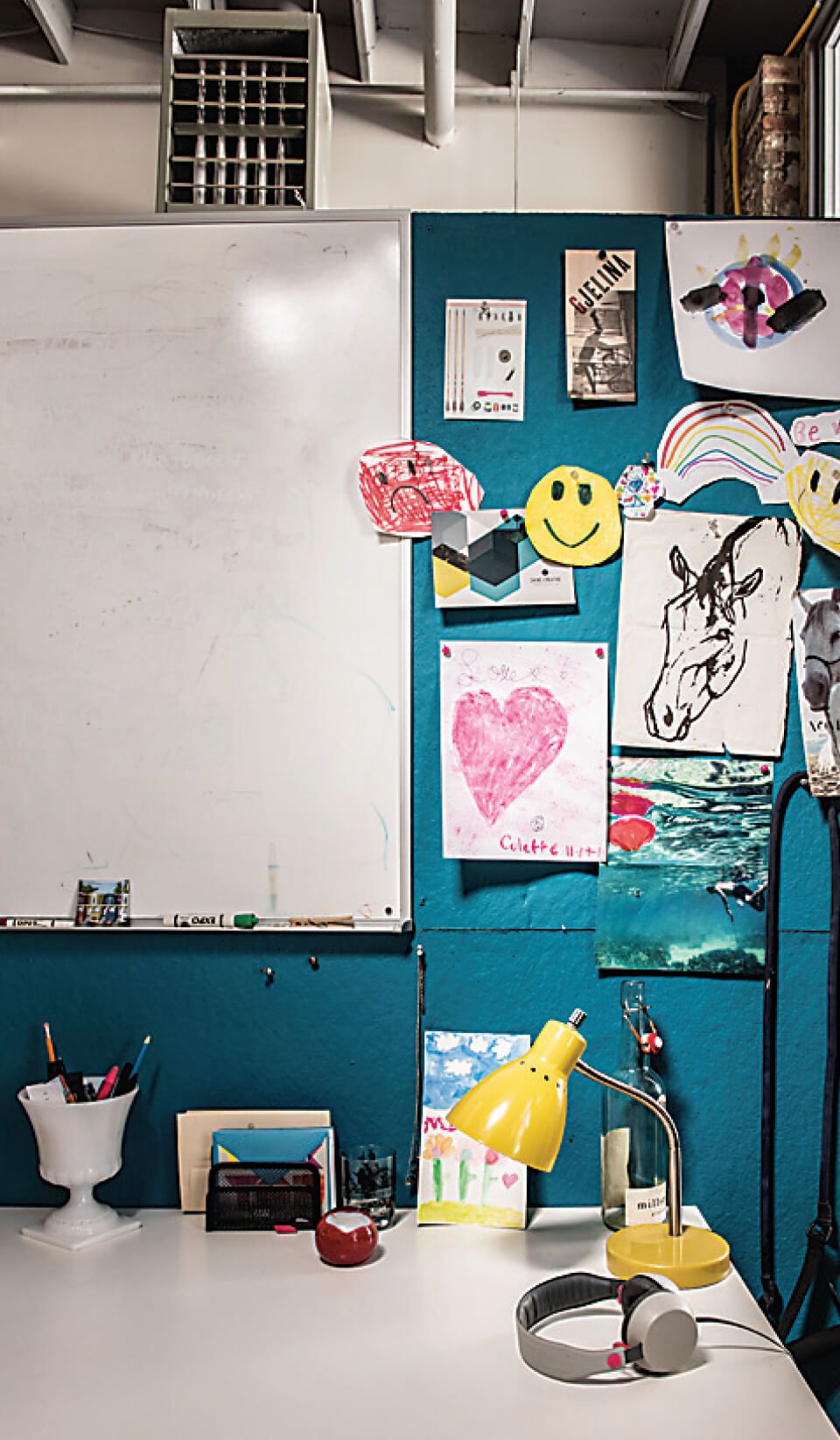
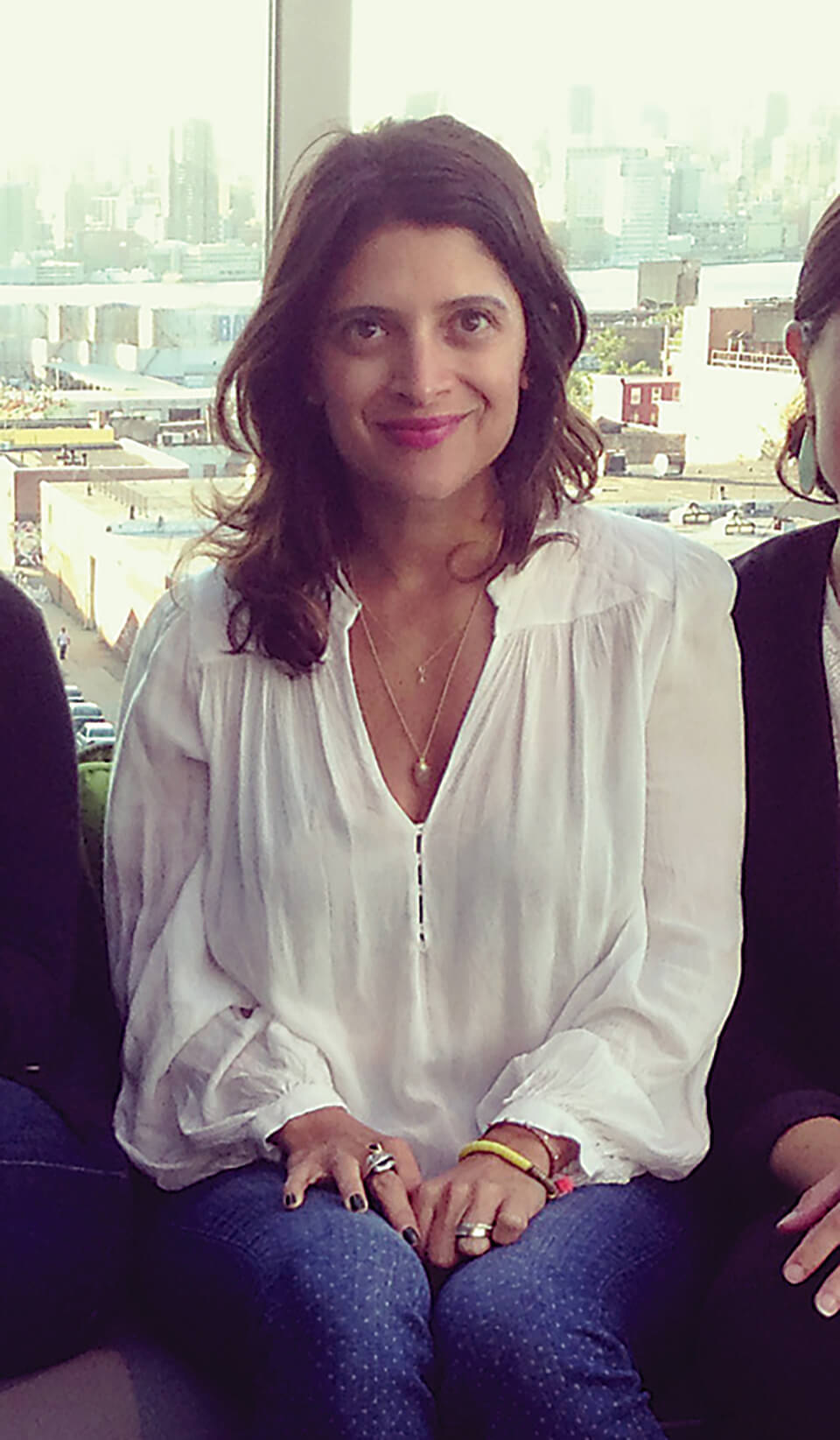
Missy's desk at Shine Creative. —Photography by Mike Morgan; Snapshot of Missy. —Courtesy of Jamie Campbell
Though she was beautiful and popular—the 1990 homecoming queen at Columbia’s Wilde Lake High School—Missy was anything but a stereotypical alpha girl. Unfailingly sweet and kind, people swear to this day they’ve never heard her utter a bad or judgmental word about anyone. She hates gossip and conflict and always radiates positivity and warmth. Her business partner and close friend Jamie Campbell laughs that Missy is the only person she knows who actually answered the phone every time her mother called.
“It could be four times a day. Every time. She would say, ‘But it could be something!’ And I’m like, ‘It’s never anything. She’s in Marshalls. She wants to know if you want socks.’”
After graduating from the University of Pittsburgh, Missy made the inevitable move to New York City, and then to Los Angeles, working in a variety of fashion-related jobs. But in 2000, she followed her then-boyfriend, now-husband, Matt Kirby (also a Wilde Lake grad), to Baltimore, where the duo bought a house in early-gentrification Hampden and flung themselves into urban life with abandon. Missy and Matt—a film major who worked as a creative strategist and DJ’ed on the side—were that couple who always seemed to know the most interesting, artsy people, the coolest music, the hippest parties, the best coffee shops.
The cause of Missy’s stroke has never been determined. It was as if she’d been struck by lightning
One night in 2002, Matt told Missy he had seen someone packing up a U-Haul outside a tiny shop on Roland Avenue. Missy had always loved the idea of opening a boutique of her own, a place she could put her distinctive stamp on. And so Shine Collective was born, a store with an ultra-cool N.Y./L.A. vibe unlike anything Baltimore had seen. Shine was like an extension of Missy’s personality, filled with interesting, beautiful, carefully curated objects. It drew people in.
“Sometimes you go to a store that has one or two cool things,” says former Baltimore magazine style editor Janelle Erlichman Diamond (now the editor of Baltimore Weddings). “But everything in that store was incredible.”

On a creative retreat in Los Angeles. —Courtesy of Jamie Campbell
Many credit Shine with paving the way for the re-invention of Hampden; Missy and her friend Jamie Campbell, who became a partner in the store, were once dubbed the “first ladies of Baltimore’s boutique scene.”
“They really were trailblazers,” says Diamond.
As Shine continued its ascent (it would eventually take over a larger space on The Avenue), Missy and Matt became parents—to daughter Colette in 2004 and son Kingston in 2007—and the family moved to a Charles Village rowhouse. But Missy didn’t let motherhood cramp her trademark style, becoming the kind of cool city mom who took her 2-week-old to a New Year’s Eve party with friends.
Shine moved from Hampden to a space behind Woodberry Kitchen in Clipper Mill and began collaborating with Jamie’s husband, Drury Bynum, on videos to showcase the boutique’s wares. The videos started to take on a life of their own, and the partners realized that that was the direction they should take their business in. In the summer of 2010, Shine Collective closed and was reborn as Shine Creative. Shine’s appealingly hip, documentary-style videos struck a chord with clients. Missy handled new business development, and was responsible for bringing in accounts. In typical fashion, within her first year, she had landed Under Armour, among other big gets.


Snapshots of Missy. —Courtesy of Jamie Campbell
No, life wasn’t perfect for Missy Kirby on April 8, 2014. It was stressful running a small business. It was hard being a working mom, getting the lunches made and volunteering at the kids’ charter school, and finding time to work out. But at 42, Missy had carved out a life doing exactly what she wanted to be doing, a life surrounded by people she loved and beautiful things in a city she adored. Magic surrounded her.
“I don’t ever really get scared, but I was scared of how happy we were,” concedes Matt. “We were imperfectly perfect. We had so much to be thankful for. And we still do.”
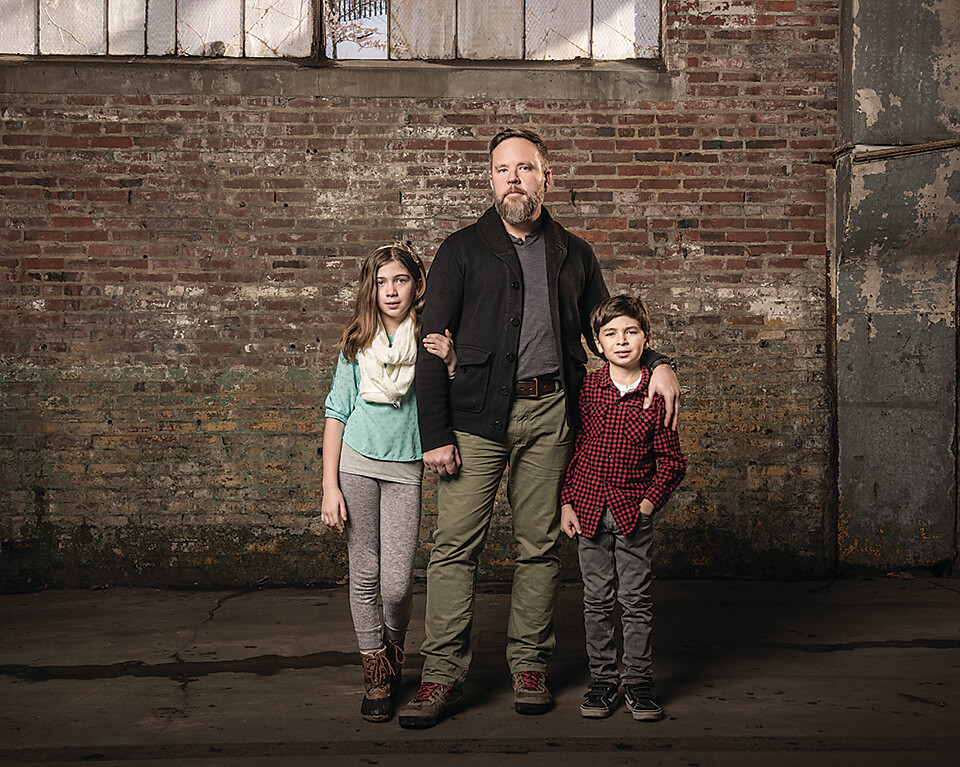
Matt Kirby with Colette and Kingston. —Photography by Mike Morgan
When word first circulated that Missy Kirby had been taken to the hospital, people naturally assumed that it couldn’t be anything serious. Low blood sugar? Maybe she’d just fainted? Because Missy was the picture of clean living. She ate organic and did yoga and meditated. She worked out with a trainer once a week. When asked at the hospital to provide the name of their pharmacy, Matt confessed that he and Missy didn’t have a pharmacy. They didn’t even have a bottle of Tylenol in their house.
But it soon became clear that Missy’s condition was extremely grave. She had suffered multiple devastating strokes in her brain stem, the thumb-sized region at the base of the brain that connects to the spinal cord. She was transferred to the Neuro-CCU at Johns Hopkins Hospital, where the waiting room was packed nonstop with throngs of concerned friends and family; for an agonizing period of time it was unclear whether she would survive.
A stroke? As doctors would tick off the list of risk factors—high blood pressure, high cholesterol, smoking, diabetes—a baffled Matt found himself becoming a broken record.
“Nope. Nope. Nope. Nope,” he would say.
The cause of Missy’s stroke has never been determined. It was as if she’d been struck by lightning.
“We wish we had answers to everything as doctors,” concedes her neurologist, Dr. Argye Hillis. “Sometimes we don’t.”
When she first regained consciousness, Missy was in a rare state known as “locked-in syndrome.” Fully aware, and with her cognitive function intact, the strokes had damaged the vital connections from her brain to her muscles, leaving her unable to move anything but her eyes. Matt and Missy actually were familiar with locked-in syndrome because they’d seen The Diving Bell and the Butterfly, the 2007 Julian Schnabel film based on the memoir by French Elle editor Jean-Dominique Bauby, who was left “locked in” after a brain stem stroke at the age of 43. Almost completely paralyzed, Bauby dictated the book by moving his left eye to correspond to letters on an alphabet board, his only means of communication.
Recovery from locked-in syndrome is possible. But it is a painfully slow, laborious process, as the brain tries to forge new pathways to circumvent the damaged ones. Bauby likened it to the pace of a “hair growing from the base of the brain.”
Missy has spent the last 23 months in a series of hospitals and nursing facilities, where she has approached rehabilitation with her signature determination. The little girl so stubborn she would literally hang on to her mother’s car to try to keep her from leaving without her now works relentlessly in therapy at the grueling process of recovering the basic abilities she had before the stroke.
“It’s easy to give up,” says Dr. Hillis. “She just never has. She has just been a fighter.”
“It’s like watching a flower bloom in real time,” says Campbell. “It’s so slow. But it’s going to happen.”
Missy remains in a wheelchair, tube fed, and unable to speak, but she is now able to make some sounds and mouth words; she has regained some movement in her head and hands. She can communicate through an alphabet board, but it can be challenging. Matt was puzzled by his mother-in-law’s recent request that he bring “wine and pizza” to the hospital; it turned out Missy was asking for Food & Wine magazine. She listens to audiobooks and watches TV shows like Game of Thrones, Grey’s Anatomy, and Real Time with Bill Maher. She FaceTimes on an iPad, although it’s typically a one-way conversation.
“People ask, ‘How’s Missy doing?’ It’s such a complicated question to answer,” says Jamie’s husband, Drury, now Shine Creative’s principal/director. “Because compared to [right after the stroke], she’s light years from where she was. But the answer that people are looking for is ‘Is she walking? Is she talking?’ Those are the two benchmarks that everyone has in their heads for a successful recovery. But there are a million steps from where she was to both of those goals that are super significant. They’re hard to recognize and hard to celebrate.”
“It’s like watching a flower bloom in real time,” agrees Jamie. “It’s so slow. But it’s going to happen.”
There is no exact prognosis for Missy, but her youth, health, and attitude are all working strongly in her favor. Matt believes it’s possible that Missy will eventually be able to care for her children independently again. Her partners still get her input on business matters, and she has indicated she’d eventually like to return to work.
“I don’t think any of us can say what the ‘best’ she can be is,” says Dr. Hillis. “I’ve seen people continue to improve for 10 years or more if they continue to have rehabilitation and make an effort.”
Missy is buoyed by an almost superhumanly supportive inner circle that advocates tirelessly for her, navigating the phalanx of doctors, therapists, insurance companies, and lawyers that has taken over her world. For her first six weeks in the hospital, there was somebody with her 24 hours a day; her retired parents still see her daily. Soon after Missy’s stroke, Jessica Sarkis quit her job in Chicago and moved back to Maryland to be closer to her sister. And Matt, who has an unmistakable air of zen about him, has been “a rock,” says Jamie, keeping everyone calm and making sure the kids stay on an even keel. His strategy, all along, has been to “keep it real” with his children.
“He’s had the kids around [Missy] from the very beginning,” says Cathy. “They’re so sweet with her.”

Dreamcatchers dangle above the Clipper Mill swimming pool during a fundraiser. —Photography by Laura Ferrara
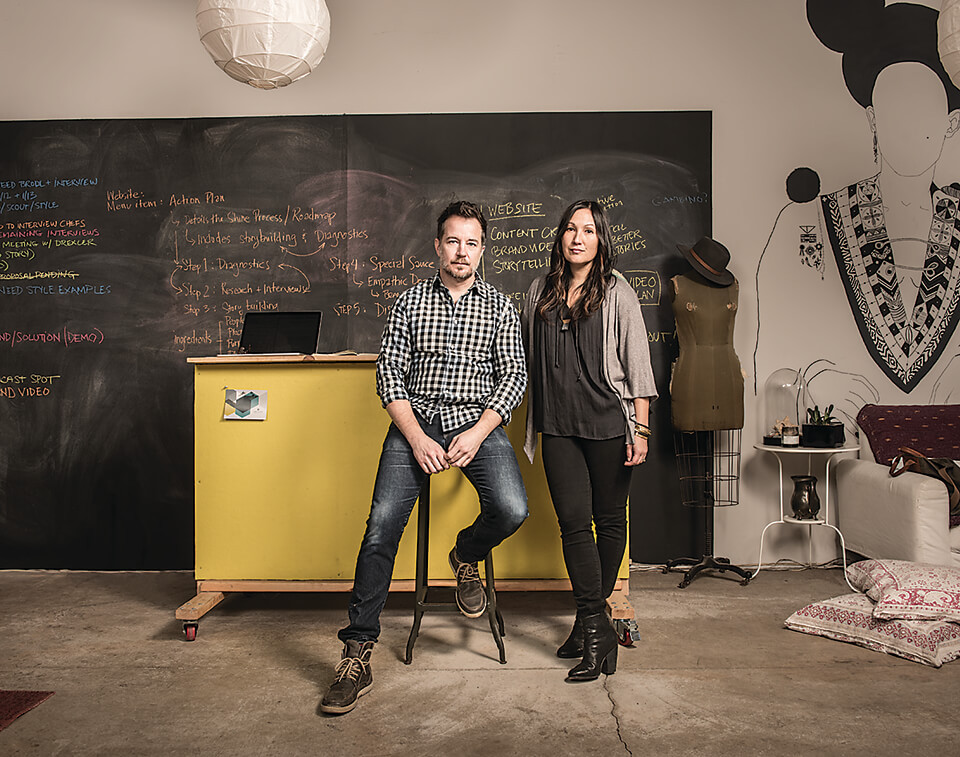
Drury Bynum and Jamie Campbell at the Shine Creative offices. —Photography by Mike Morgan
And while they are realistic about the seriousness of the situation—“There isn’t a day that goes by that it hasn’t rocked me to my core,” says Stephanie—those closest to her avoid wallowing in negativity or self-pity. In the haze of those early days, someone joked that they should try to approach things the way Missy would—and Missy would no doubt focus on the positive. “We have to cultivate gratitude here and be really thankful Missy survived such a catastrophic event,” says Jessica. “We’re very lucky she’s here.”
It’s that attitude that once led Cathy to bark at a hospital resident who had a scowl on his face.
“Everything emanating from him was so dark,” she explains. “I said, ‘Stop it. You are talking to me about my daughter. Put a smile on your face when you’re talking to me about her.’”
Missy was not made available for this story, but everyone who spends time with her says that even though her voice has been silenced, her spark is still unmistakably apparent. It’s not every patient whose doctor would think to mention how much they smile. Missy is still “so Missy.”
“People say ‘What a tragedy! I wouldn’t want to live.’ But that’s not how Missy sees it,” says Stephanie. “I know she still sees the joy in everything. Could most people deal with this type of thing? Probably not. But she’s not most people. . . . [She still] has a desire to live and live beautifully. I’m so confident that even in her situation, she will.”
True to Missy’s spirit, the unexpected catastrophe that befell her has left in its wake many beautiful acts of kindness and generosity. The community of which Missy was such a vibrant part continues to rally around her, from the meals left on Matt’s porch, to multiple fundraising events—Missy herself attended one, a beautiful people- packed evening in her honor at Clipper Mill’s luxe swimming pool—and online campaigns mounted to help defray the astronomical cost of her ongoing care. A Facebook page devoted to Missy’s recovery is filled with endless expressions of love and encouragement. The family, not used to being the ones on the receiving end of such gestures, has been humbled. Missy’s mother jokes that she wants to write a book about their ordeal called Everybody Loves Missy.
Cathy believes that there must be a larger purpose for her daughter’s stroke, a lesson of some kind. She’s been known to chat up total strangers at BJ’s to tell them what Missy is going through. And indeed, even for those who never knew her, it is virtually impossible to hear about Missy’s plight and not be moved by her fighting spirit, or remember to slow down and be grateful for how much we have, even on our most exasperating days.
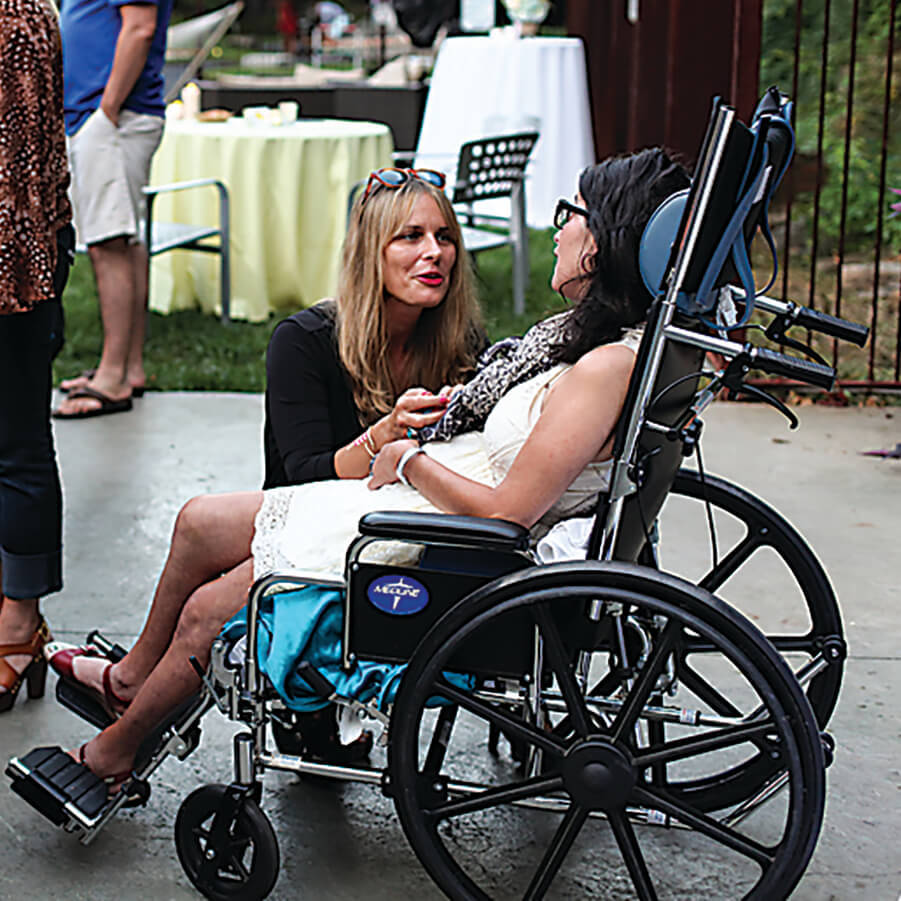
Missy and a friend at the Clipper Mill event.
—Photography by Laura Ferrara
“It’s so easy to say she inspires people but it truly is an inspiration,” says Matt. “What she’s doing is overcoming one of the craziest, rarest things to happen to you—when you go from being completely normal to being completely not. It opens up people to give them inspiration to live life fuller, to try something they might not have tried.”
Matt chooses to see his wife’s stroke as an unforeseen turn in her life’s path, a path that always gravitated to the “B side of things.” And he is confident it’s a path they can navigate.
“It is wild, living on earth. So you should expect the unexpected,” he says. “And that’s hard to carry with you every day. The most beautiful things are just as awe-inspiring as the things that can crush you. . . . Shit just happens and you have to say to yourself, ‘I’m going to be okay.’”
